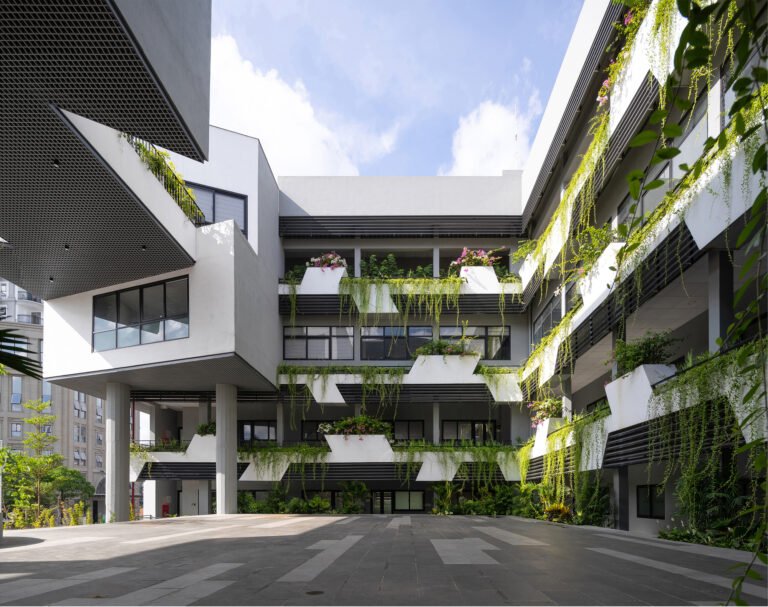Exploration Loop // People’s Architecture Office
Text description provided by the architects.
Sunshine Kindergarten is a progressive school that offers innovative learning and STEAM curriculum to a disadvantaged rural community in Hebei, China. The project upgrades and expands the facilities of an existing school that was founded in 2004. The design of the school encourages early learners to feed their curiosity and engage in creative exploration at an extremely formative period in their lives.

© People’s Architecture Office

© People’s Architecture Office
The design introduces a covered walkway in the form of a loop that links new learning spaces to pre-existing ones. Disparate elements of the original school are woven together as a unified whole. The loop becomes a social condenser where students mix and interact with intersecting spaces and programs. Also connected to the loop is a new multipurpose hall that serves as a central column-less social space.A flexible, informal learning space, the loop encourage self-directed exploration.

© People’s Architecture Office

© People’s Architecture Office
The area under the loop supports activities that require more space, such as building large structures out of foam blocks. This space can also be transformed into imaginary environments for role-play such as a market street with food carts, and it can serve as an indoor play area when the weather is poor.

© People’s Architecture Office

© People’s Architecture Office
Such activity is naturally led by the interests of each individual. In this way, space takes on the role of the ‘third teacher’ by supporting self-directed learning and helping to lighten the workload of teachers.
The Sunshine Kindergarten includes areas for large and small performances, a range of playscapes, as well as classrooms set up for traditional teaching.

© People’s Architecture Office

© People’s Architecture Office
The design incorporates ways to connect students to the real world through experience-based learning. The school has indoor and outdoor gardens for students to learn from nature. Two STEAM classrooms are designed with hands-on activities in mind. There are kitchen and woodworking facilities and spaces that support activities for art, engineering, and astronomy.

© People’s Architecture Office

© People’s Architecture Office
A mobile STEAM corner allows teachers the ability to bring such activities to different places in the school.To help students build confidence and learn self reliance, the school is designed to the scale of young children. A mini outdoor stage structure, tree house and green house are intimately sized for early learners.

© People’s Architecture Office

© People’s Architecture Office
Small nooks in classrooms allow for personal space and focused activities. And appropriately-scaled furniture and shelving provide tools and materials that are easily within the reach of young learners, encouraging independence.The design nurtures social interaction and creates a cohesive learning community through an interconnected campus of diverse spaces and program.

© People’s Architecture Office

© People’s Architecture Office
By strategically incorporating spaces and tools for autonomous play and development, the design aims to cultivate lifelong learners of tomorrow..

© People’s Architecture Office

© People’s Architecture Office
Exploration Loop Gallery



